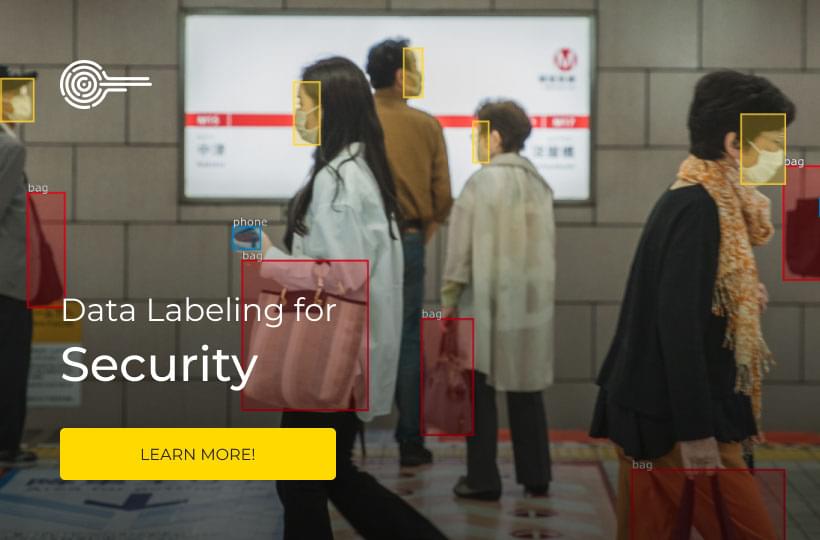Implementation of AI in the Security Industry: The Basics and More

The idea behind artificial intelligence isn’t new by any means. We’ve seen it in popular culture, search engines have been using it for more than a decade, and the algorithms powering modern software heavily leverage AI and automation.
The security industry is one industry that is feeling the effects of AI, from cryptographic algorithms that create strong passwords to data annotation processes that clarify security footage. AI isn’t just a big idea or a nice-to-have — today it’s a must-have.
In this article, we are going to explore the relationship between data annotation and the security industry.
The Traditional Approach to Security: Video Footage
If you are a homeowner, or you own a dashcam, you can agree that it is tedious to view hours of grainy black and white footage. Multi-camera systems are even more of a hassle. Replaying the same event on tape repeatedly, trying to find out which objects are missing and which facial features the perpetrators are showing, is time-consuming.
Luckily, with the following forms of data annotation, you can view security footage without spending as much time doing so.
Video annotation | Keymakr
Common Types of AI Data Annotation
Detect Objects with Bounding Boxes
Bounding boxes display a colored box over an object of interest. You can choose to display bounding boxes over bags, faces, or any other image in a photograph or video feed. By covering items in boxes, you make them easier to track, saving a lot of time when reviewing your footage.
Instance Segmentation: An Advanced Form of Bounding Box Object Detection
Instance segmentation is similar to bounding boxes but much more precise. While bounding boxes cover an object in a square or rectangle, regardless of the object's actual shape, instance segmentation limits itself to the item's shape.
One example of why you would want to use instance segmentation is if you are tracking damaged merchandise. You will want to know if an object loses a part of itself in transit, like a bag strap. Instance segmentation makes it easier to observe this.
Skeletal Annotation: The Next Level of Crime Surveillance
When security firms and police review security tapes, they make inferences about suspects: how tall they are, their bodyweight, their physique, and more. What skeletal annotation allows you to do is to analyze a person's gait, which you can use to make more meaningful and specific inferences like weight distribution, potential previous injuries, and more.
These benefits are great, but how can you add AI data annotation to your footage? Read on.
Some Benefits of Adding AI to Your Security Footage
Tracking with security AI | Keymakr
Tracking People
Repeat suspects of crimes generally visit a crime scene several times before committing the crime. First-time suspects usually do not think of doing this. By tracking people with data annotated security footage, you can build up a suspicious person profile, which the police or a security firm would love to have at hand.
By tracking people, you can learn so much more about how to protect your car, property, or business, based on the inferences made by AI and the data you have.
Identifying Objects and Animals
Objects and animals can move very quickly on the screen. An animal may move so fast that the human eye might mistake it for a blur. Unless they stop and hover, have you ever considered how difficult it is to see a hummingbird in flight?
By identifying objects and animals on security footage, you can find suspicious activities happening on camera that you would otherwise miss without AI.
Detecting Movement
Tracking people and animals includes tracking the movements of every part of their body. With AI, you can analyze how someone in security footage moves their hands, feet, or even where they are looking.
You can access so much more information about package thieves, carjackers, and suspicious individuals on your property than by just viewing footage without data annotations.
Tracking Objects in Video
Video footage is extensive, and it is a lot to process for any individual surveillant. Even if you have a room full of guards whose sole purpose is to review security footage, the process can take hours, days, or even weeks, depending on the security incident.

Keymakr: Data Annotation Services for the Security Industry
AI is used a lot in the security industry, especially with data annotation services on security video feeds.
Keymakr uses experienced data annotators, big data, machine learning, and AI to provide much-needed context to your security images and footage feeds.
Are you looking to improve your data annotation processes? We can help. Contact us today to learn more about our services.



